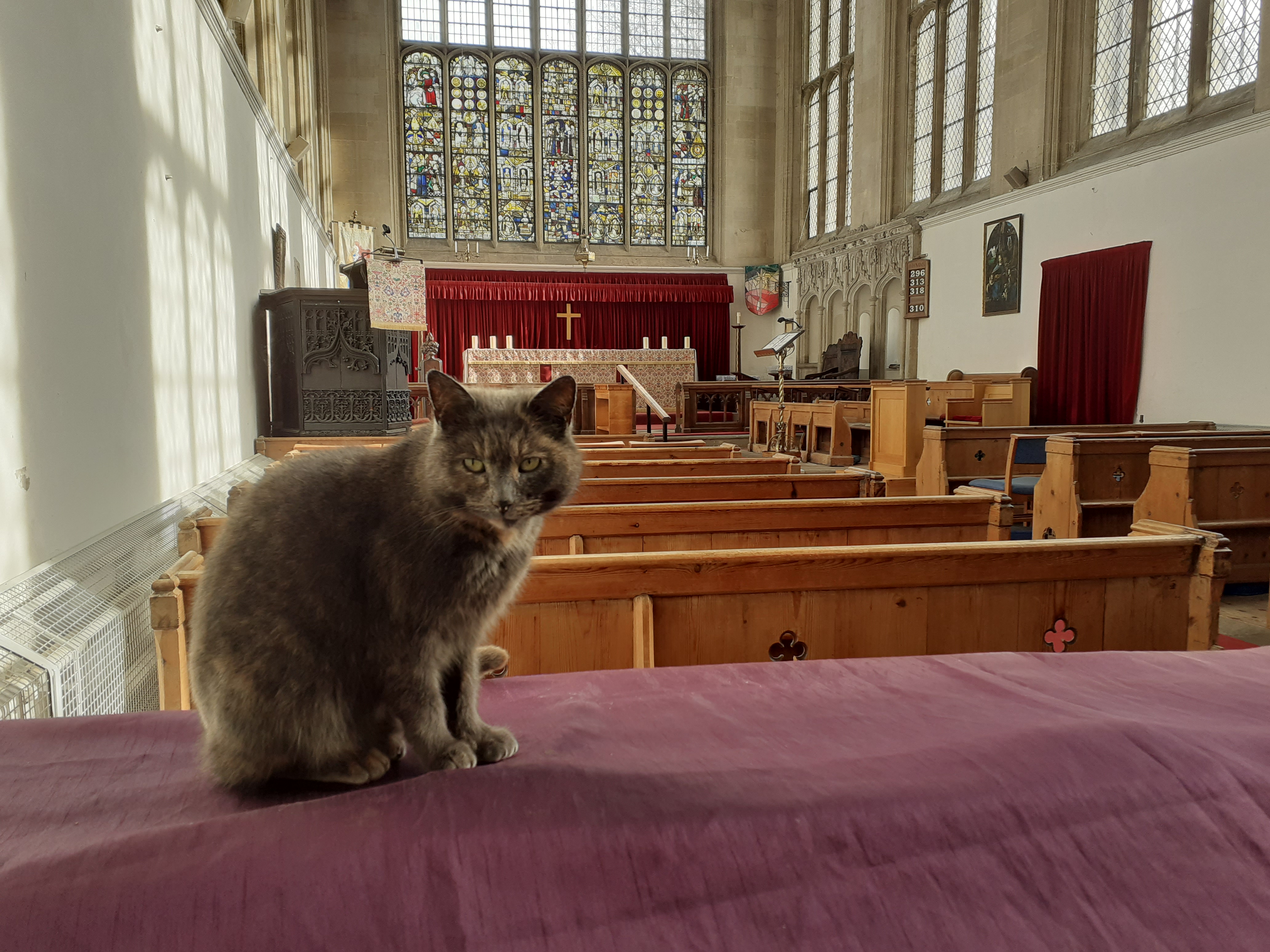Here at Triskele Heritage we love a cat! The office is often home to our three black rescue cats, but we’re always on the lookout for cats at historic sites too. We’d like to celebrate International Cat Day (8 August) with a post about these archaeologically-inclined felines…

Cats have been constant companions for humans in the historic built environment for many centuries. Evidence for this comes from documentary references, manuscript illustrations and even from graffiti. A particularly famous example can be found on one of the nave pillars at St Albans Cathedral in Hertfordshire. It is probably mediaeval in date – from when the building was a Benedictine abbey – and features an anatomically accurate cat caught midway through, what can only be described as, intimate grooming…

Such a graffito may have been carved by one of the monks or perhaps a visitor to the site. It represents an observation of the contemporary life at the cathedral in the mediaeval period. That world would have included cats who would have been encouraged to roam about the building to help keep down the rodent population.
Evidence of ratters and mousers comes from holes which were sometimes incorporated in ancient doors. The most famous of these can be found at Exeter Cathedral in Devon. A door has been altered to allow cats to enter the staircase leading up to a mediaeval clock – perhaps the cathedral’s rodents had been playing merry hell with the ropes of the mechanism!

In the fifteenth century there was even a cat on Exeter Cathedral’s payroll – earning a penny a week! A graffito at Southwell Minster in Nottinghamshire graphically shows exactly what it was that the cathedral cats were expected to hunt…

It would seem that it was not just the cathedrals which employed cats. Rats and mice were to be found everywhere in mediaeval England and folk were keen to try and protect their homes. This was the case even at the top end of society. The bishop of Lincoln’s residence at Lyddington in Rutland has a cat hole cut through the bottom of a door in the bishop’s own private quarters to allow access by the all-important cats.

We recently recorded a similar historic cat hole in a private house in Worcestershire. Cats are still very much to be found in the historic built environment. The most famous of these was probably, the recently deceased, Doorkins Magnificat (R.I.P.) who was taken in by the community at Southwark Cathedral in south London. She had her work cut out chasing the rodents as the site is bounded by the River Thames on one side and Borough Market on the other! Most of the time she could be found snoozing in various warm spots around the building though.

We’ve encountered many other cats at historic properties including Old Wardour Castle (Wiltshire), Tattershall Castle (Lincolnshire) and Wells Cathedral (Somerset). It’s always a great moment in every site visit to meet a feline who lives and works at these heritage properties and well worth taking a moment to spend some time with them.



So, on International Cat Day, we salute the felines who inhabit our historic monuments!

